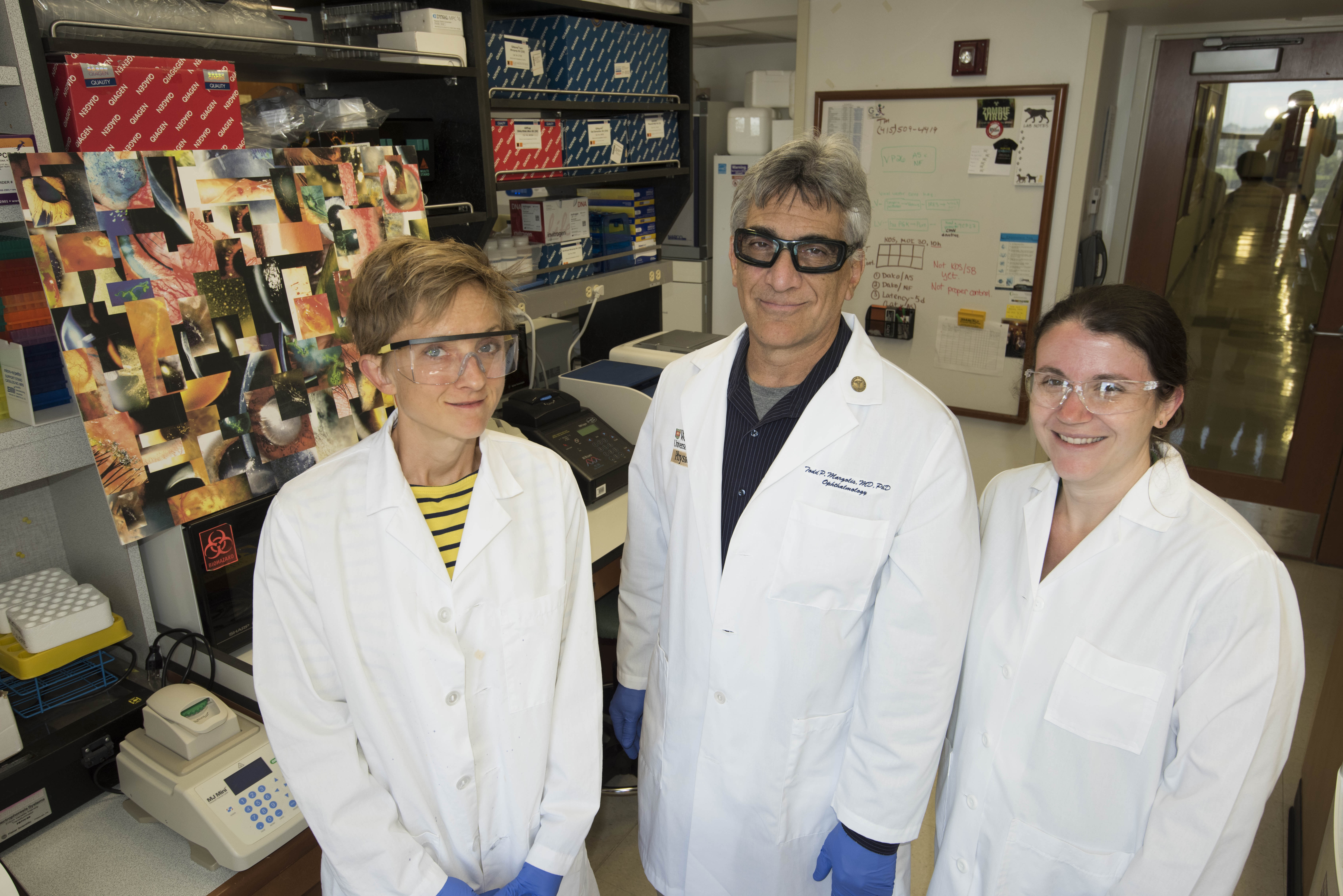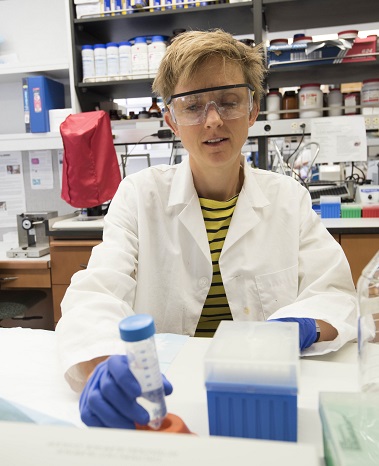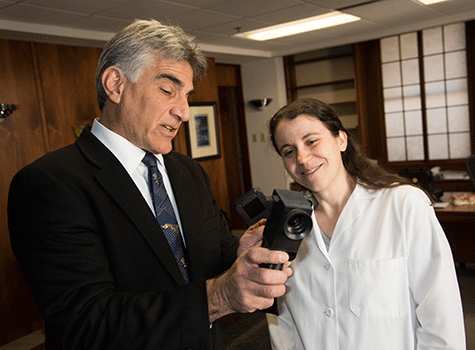Margolis Lab
Todd P. Margolis, MD, PhD, Alan A. and Edith L. Wolff Distinguished Professor and Chairman, Ophthalmology and Visual Sciences

Research
T.P. Margolis, T. Pasieka, A.W. Harrington, K. Apakupakul, T. Suresh, L. Axenov
The primary focus of our laboratory is to carry out research on the viral and cellular mechanisms that regulate the establishment and maintenance of latent neural infection with herpes virus (HSV-1). Previous work suggests that establishment and maintenance of HSV latent infection is heavily dependent on the genetic expression of the host neuron. Ongoing research is aimed at documenting the role of both neuronal and viral gene expression in the establishment and maintenance of HSV latency. To test the effect of host candidate genes, we are employing the Cre-lox system under the control of inducible, cell specific drivers. This approach has multiple advantages: gene deletion can be temporally induced allowing for experiments addressing both establishment of latency and reactivation, gene deletions can be cell type specific, and experiments conducted with this system are inherently more biologically relevant than cell culture based assays.
Since some research questions simply cannot be addressed in vivo at this time, a second strategy has been to develop an in vitro primary neuron culture system to study both productive and quiescent (latent) infection of neurons. Furthermore, this culture system can be combined with the above described inducible Cre-lox system to study host candidate genes and reactivation in vitro. A third strategy has been to take advantage of our observation that HSV-1 and HSV-2 preferentially establish latent infection in different subsets of ganglionic neurons. A major focus of our current research is to use our in vitro system to study the molecular mechanism by which this occurs. The ultimate goal of our work on HSV is to gain enough of an understanding about the regulation of latent infection that therapeutic interventions can be devised to eliminate latent infection or prevent viral reactivation.
Other research interests of Dr. Margolis include the optimal use of telemedicine in Ophthalmology, and clinical studies of Ocular Graft versus Host Disease.


Publications
Click to view all Dr. Margolis NCBI publications on PubMed»
- Yen M, Ausayakhun S, Chen J, Ausayakhun S, Jirawison C, Heiden D, Holland GN, Margolis TP, Keenan JD. Telemedicine Diagnosis of Cytomegalovirus Retinitis by Nonophthalmologists. JAMA Ophthalmol. 2014 Jun 19.
- Culican SM, Rupp JD, Margolis TP. Retaining clinician-scientists: nature versus nurture. Invest Ophthalmol Vis Sci. 2014 May 27;55(5):3219-22.
- Maamari RN, Keenan JD, Fletcher DA, Margolis TP. A mobile phone-based retinal camera for portable wide field imaging. Br J Ophthalmol. 2014 Apr;98(4):438-41.
- Greene JB, Jeng BH, Fintelmann RE, Margolis TP. Oral azithromycin for the treatment of meibomitis. JAMA Ophthalmol. 2014 Jan;132(1):121-2.
- Estopinal CB, Ausayakhun S, Ausayakhun S, Jirawison C, Joy Bhosai S, Margolis TP, Keenan JD. Access to ophthalmologic care in Thailand: a regional analysis. Ophthalmic Epidemiol. 2013 Oct;20(5):267-73.
- Kempen JH, Sugar EA, Jaffe GJ, Acharya NR, Dunn JP, Elner SG, Lightman SL, Thorne JE, Vitale AT, Altaweel MM; Multicenter Uveitis Steroid Treatment (MUST) Trial Research Group. Fluorescein angiography versus optical coherence tomography for diagnosis of uveitic macular edema. Ophthalmology. 2013 Sep;120(9):1852-9.
- Friedman DS, Holbrook JT, Ansari H, Alexander J, Burke A, Reed SB, Katz J, Thorne JE, Lightman SL, Kempen JH; MUST Research Group. Risk of elevated intraocular pressure and glaucoma in patients with uveitis: results of the multicenter uveitis steroid treatment trial. Ophthalmology. 2013 Aug;120(8):1571-9.
- Bertke AS, Ma A, Margolis MS, Margolis TP. Different mechanisms regulate productive herpes simplex virus 1 (HSV-1) and HSV-2 infections in adult trigeminal neurons. J Virol. 2013 Jun;87(11):6512-6.
- Heiden D, Margolis TP, Lowinger A, Saranchuk P. Eye exam with indirect ophthalmoscopy for diagnosis of disseminated tuberculosis in patients with HIV/AIDS. Br J Ophthalmol. 2013 May;97(5):668-9.
- Bertke AS, Apakupakul K, Ma A, Imai Y, Gussow AM, Wang K, Cohen JI, Bloom DC, Margolis TP. LAT region factors mediating differential neuronal tropism of HSV-1 and HSV-2 do not act in trans. PLoS One. 2012;7(12):e53281.